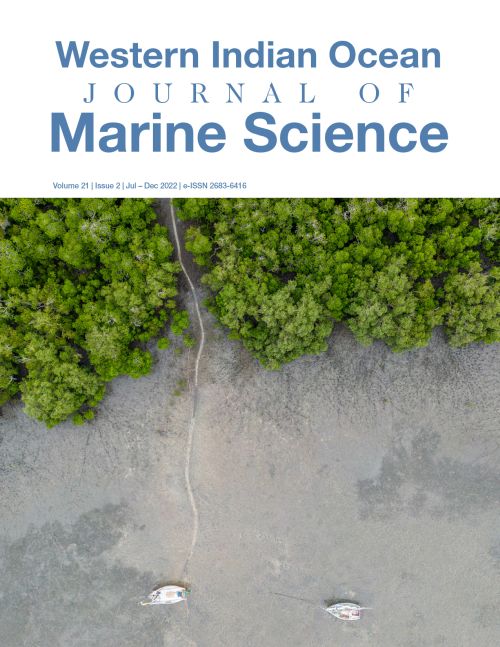Main Article Content
Tidal cycle and time of day control pH levels in coastal habitats of the western Indian Ocean: the case of Mnazi and Chwaka Bays in Tanzania
Abstract
Ocean acidification, a progressive decrease in the pH and change in the carbonate chemistry of seawater caused by the uptake of carbon dioxide (CO2) from the atmosphere, is a growing crisis that threatens marine species. pH data relevant to a species’ natural habitat in the coastal waters of the western Indian Ocean (WIO) is still sparse, limiting the capacity to undertake manipulative studies to better understand the impacts of ocean acidification on marine species. This study investigated tidal and day-night pH variations in mangrove, seagrass, and coral reef habitats of the WIO by using Tanzania as a case study. The mean pH of the studied coastal habitats was highest in seagrass (8.49 ± 0.29), followed by coral reef (8.33 ± 0.06), and lowest in mangrove (8.20 ± 0.17). Seagrass habitats had the highest pH (9.06) during the day at low spring tides, mangrove habitats had the highest pH (8.45) during the day at high spring tides, and coral reef habitats had the highest pH (8.47) during the day at low tides. Seagrass habitats had the widest pH range (1.03), followed by mangrove habitats (0.54), while coral reef habitats had the narrowest range (0.23). The water with the highest pH during the day was transported to nearby mangrove habitats during incoming tides and to coral reef habitats during outgoing tides, resulting in the highest mean pH in mangrove and coral reef habitats during spring high and low tides, respectively. pH within the seagrass habitats correlated strongly and positively with changes in temperature (r=0.80), dissolved oxygen (r=0.84), and salinity (r=0.72), while pH in mangrove habitats correlated moderately and positively with dissolved oxygen (r=0.59). This study provides in-situ evidence on the pH fluctuations in the WIO’s coastal habitats over time and space, with water from seagrass habitats capable of raising the pH of water in nearby mangrove and coral reef habitats during the day, thereby potentially helping in the mitigation of the effects of ocean acidification on these habitats.






